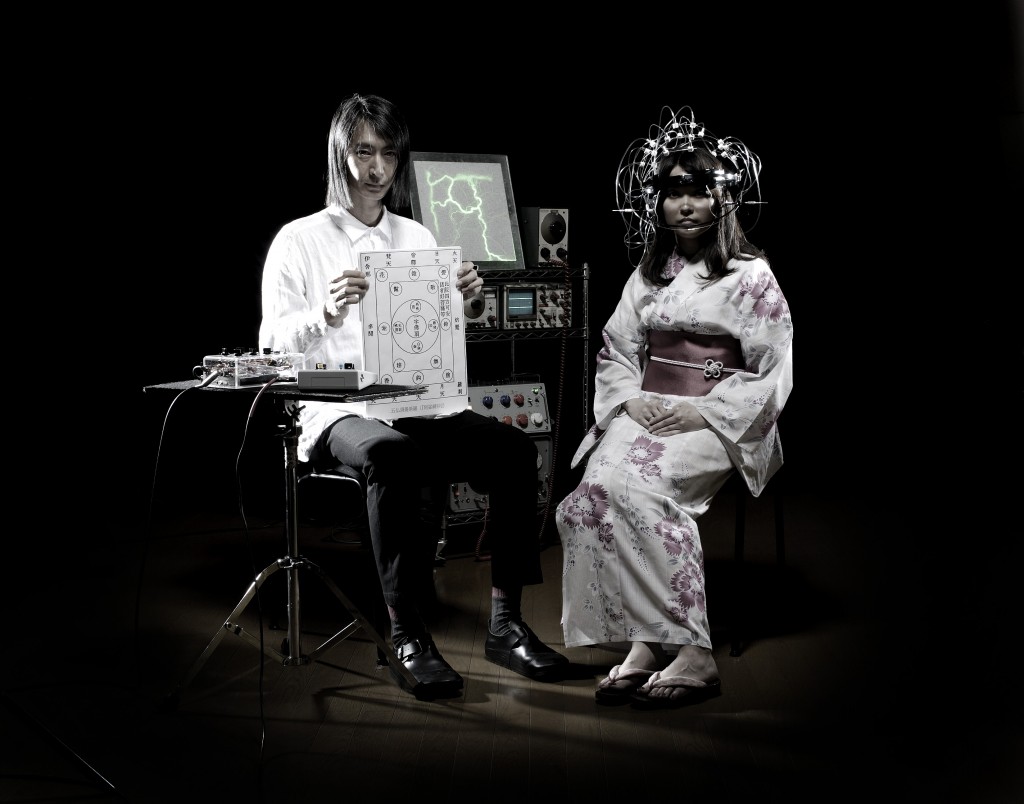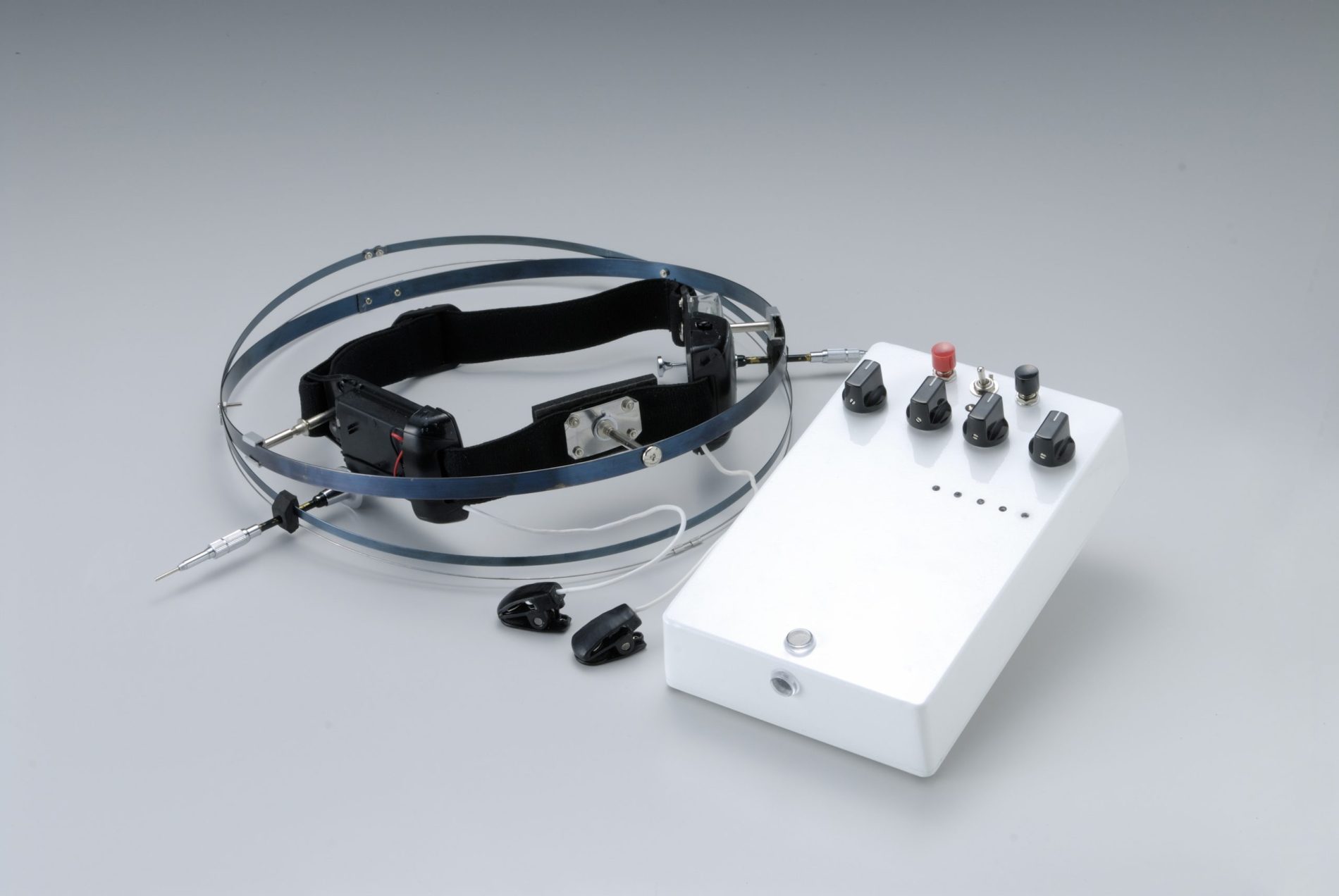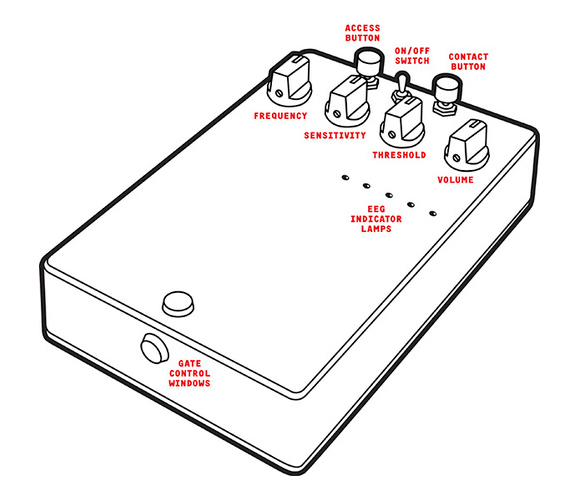THOUGHT PROCESSES: Drag City sells Masaki Batoh’s Brain Pulse Music Machines
GHOST’s Masaki Batoh created a space age machine that transfers brain impulses into music. Now Drag City records is selling them to the public

Kyoto-born vocalist/guitarist, Masaki Batoh first gained prominence after forming the experimental Japanese group GHOST at a Tokyo university back in 1984. The psychedelic outfit, which rarely ever retained a consistent lineup, didn’t begin releasing its first recorded material until the very early 1990s, but they have a reported history as nomads, roaming around Tokyo, inhabiting such environments as the ruins of ancient temples and abandoned subway stations (no doubt an inspiration for Akron/Family’s last full length). Outside of the group, Batoh has continued his experimentation through solo releases and collaborations with acts like, former Galaxie 500 members, Damon and Naomi, as well as Swedish multi-instrumentalist, Helena Espvall of the Philadelphia band, Espers. GHOST‘s roots are deeply steeped in improvisation and, in 2006, they played and recorded their first 100% improvisational release, Overture, to a crowd that was locked in complete darkness with them at a converted warehouse in Yokahama Bay, called Nippon Yusen Soko, and were not permitted to exit until the performance had completely finished. Always pushing forward, embracing new inspirations, and consistently experimenting, Batoh even invented a device called the “springer” which “contains metal springs, a resonance box, plasma ball (light) and rotating machine to create a heavy yet theremin-like sound“–featured on the GHOST album, In Stormy Nights (Drag City, 2007).
For his most recent solo effort, Brain Pulse Music, Masaki created a completely new device which allows him to harness the power of human brain waves and transfer them into sound. It is, arguably, his most ambitious project yet. Sound fascinating? Well, Drag City records is now releasing these machines to the public. This means that, if you have the loot, you’ll be able to strap one of these newfangled contraptions to your own dome and, while looking like Uncle Rico mid time travel, you can explore whatever sonic mess you’re able to juice out of your own fucked up subconscious.

For Brain Pulse Music, Masaki Batoh‘s original intention was simple: isolate brainwave patterns and transfer them into sound so that music could be produced from them. Apparently, others have attempted similar things in the past, but instead of measuring such things as blood flow volume in the brain, Batoh wanted to be able to harness the waves as directly as possible and filter them through a device that worked much like an effects pedal. There were also some hopes to utilize the device as a treatment method for anxiety issues and depression, assisting the subjects in normalizing brainwave levels. After the Great East Japan Earthquake in March of last year, the tectonic plates of the album itself began to shift, with the healing potential for the project drawing a much more pronounced focus.
The production was physically halted, with aftershocks causing the temporary closing of the studio. With his family still in evacuation, due to the scheduled blackouts and radiation contamination, Batoh, also a working acupuncturist ,continued to treat patients and take note of the increasing amount of mental instability that the tragedy had inflicted on so many. It was clear to Masaki that, while an experiment and demonstration, creating music from brain pulses was indeed fascinating, it was more vital than ever to explore the therapeutic uses of such a machine. The concept to strictly use the BPM Machine to create every track on the record was abandoned as well.
According to the press release…
All seven BRAIN PULSE MUSIC tracks are a prayer/requiem. Th ey are a “tamashizume” (a requiescat) and “tamafuri” (reinvigoration of the withered soul) to the victims of the Great East Japan Earthquake. Two pieces are composed of BPM machine recordings; the remaining five are rhythms and melodies commonly heard in religious rituals and provincial festivals using traditional Japanese instruments.
As further evidence of his dedication to assisting in the recovery of his country and it’s people, Batoh vowed to dedicate all of the profits from the release to relief efforts through the Japanese Red Cross.
Here is what the Brain Pulse Music Machine looks like:

And here’s a little diagram of what each of the knobs and buttons are supposed to do:

It’s not a new thing for Drag City to venture beyond simply releasing some of the most consistently amazing and innovative audio recordings of the last 2 decades. The recordings for Batoh‘s Brain Pulse Music alone demonstrate their willingness to explore some extremely far out territories. Beyond that, they have arranged comedy nights/tours, distributed films, put out audio books, and even sold their own coffee. Still, the Brain Pulse Music Machine is, arguably, the most left field product in the Drag City catalog.
The Brain Pulse Music Machine is available now for $699 and can be purchased from Drag City through THIS LINK.
Watch a demonstration video by Masaki Batoh, after this detailed product description, which really breaks down how and what the BPM Machine is doing.
About this product
Announcing a new device that will bring us closer to both INNER and OUTER space! More precisely, the output of the Brain Pulse Music Machine will be of interest to EXPERIMENTAL music listeners and PSYCHOSOMATIC medicine practitioners alike. Conceived of by Masaki Batoh as an instrument to assist in the understanding and correction of central nervous system abnormalities, the BPM machine kicks out sheets of sound based on brain waves – so the wilder the brain, the wilder the waves! This has the potential to create or augment amazing psychdelic music – who knows what insane (literally?) sounds could result?
The BPM machine consists of a headset and a motherboard. Brain waves picked up from the parietal lobe to the frontal lobe are sent via radio waves to the motherboard, which converts them into sound via a generator. The second-by-second reflection of our mental state is heard instantaneously as it is generated by the brain. In order to control the waves of sound, the mind requires training; on first using theBPM, not everyone will be able to control the sound to their satisfaction. The “awakening” that comes from a relaxed mental state is an important key to this program. While the BPM machine captures the microscopic fluctuation of brain waves; the user of machine learns to callibrate his or her thought process with the goal of a state of total relaxation or what the BUDDHISTS call “a state of anatta” (not-self). Stabilized brain waves = stabilized mental condition = stabilized physical environment.
The ULTIMATE objective is the use of the BPM for patients with congenital abnormality of the cerebral nervous system (including developmental disorder such as ADD, ADHD and LD as well as epilepsy). The instrument is also expected to be an effective therapy for depression, panic disorder and Asperger’s Syndrome, as well as an improvement on QOL (Quality of Life). Before the BPM machine can be implemented in clinical environments, more needs to be learned. BPM testers need to be trained to learn how to control the machine and have patients benefit from the experience. Several hospitals in Tokyo are using it on a trial basis – and Batoh is using it at his clinic every day. Will you be the next one to RIDE THE WAVES to greater illumination on the mysteries of the brain? Or will you use the wave forms to inform the latest conception in MUSIC? No matter which direction you’re going, the BPM WAVE starts here.